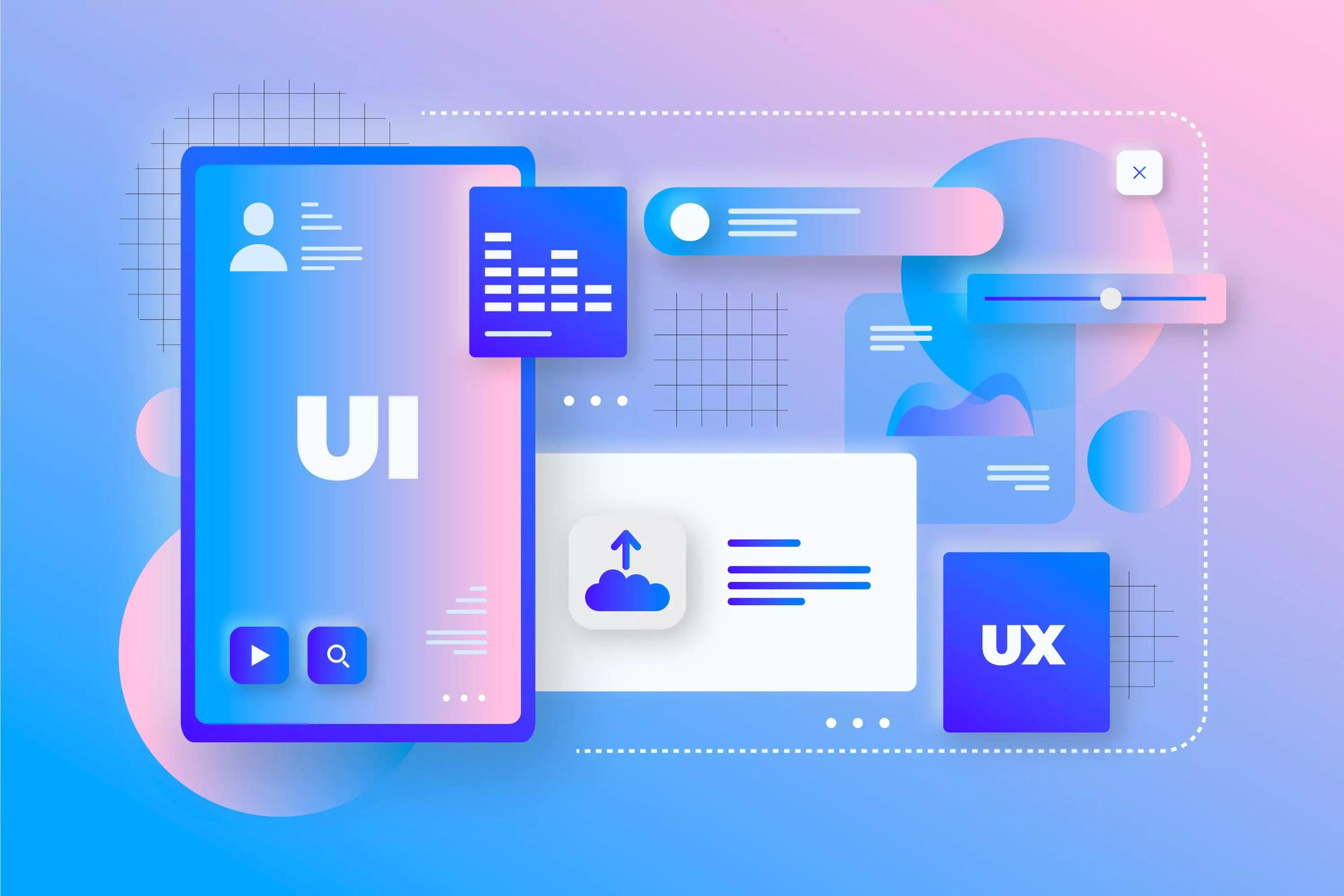The discussions about UX vs. UI differences are never-ending. The gap between user interface and user experience design is significant. Numerous analogies show how these two design elements fit, but a final answer is unattainable.
However, if you're new to design or interviewing for design jobs, knowing how and when to use these terminologies is crucial. In this blog, we will go into detail about the differences between UX and UI design.
>> Read more: The Importance Of Brand Web Design For Businesses
What is UX Design?
The user's journey with a product or service is called user experience (UX). UX design involves branding, usability, function, and design to create meaningful user experiences.
Considering the full user journey when using a product or service is the process of designing UX. Is the user exposed to the service or product by advertising, blogs, or something else? How do users interact with brands? How does the user feel following an interaction? These and other questions are crucial to UX design.
The main goal of a UX designer is for users to enjoy a product or service. Whether the encounter solves an issue, entertains, or informs, the user should feel satisfied.
>> Read more: The UX Design Process: 7 Steps for UX Designers

What is UI Design?
User interfaces are the interfaces between users and digital devices or products, such as your smartphone's touchscreen or the coffee machine's touchpad. User experience optimizes a product for successful and joyful usage, whereas user interface design enhances its look, feel, presentation, and interactivity.
UI design may feature buttons, widgets, text, photos, sliders, and other interactive elements. UI designers guarantee that every visual element, transition, and animation in a product or service creates a smooth, pleasurable experience.
>> Read more: 15 Essential Tips for Enhancing Healthcare UI Design in Mobile Apps
Why Is UI/UX Design Essential?
The quality of a product is judged by the satisfaction it brings to its customers. The following are factors that contribute to a product's success, with explanations of each:
Simpleness and Usability
A product's relevance depends on its usability and information presentation. UI and UX design are crucial to ensuring a product solves a user's concerns and provides an enjoyable and easy experience.
Accessibility and Availability
Technology has changed the world and made life easier. UI and UX design elements are one of a million technical revolutions that help firms construct application roadmaps by understanding consumer demands and wants. This becomes essential for product positioning.
Response and Correctness
A product must quickly respond to user commands. Thus, the importance of UX design in enabling rapid and easy product navigation.
Customer-centricity
UI and UX design aspects alone persuade users to adopt a product's features and values. Without user-centered UI and UX design, a product can soon lose relevance and placement in the target market.

Differences between UI & UX design
UX and UI designers are often confused, even though they focus on different aspects of a product or service. Both roles have considerable overlap, but there are also important differences.
What UI and UX are different in is how they focus on things and how the user engages with them. In general, these differences are:
| UI Design | UX Design |
| User interface design focuses on how a product is displayed to the end user. | The primary goal of user experience design is to improve the usability of a product. |
| A lot of thought goes into a product's aesthetic framework. | Focused on how well a product can adapt to the demands of its users. |
| Uses the user's preferred icons, layout, typeface, colors, and actions to create an emotional connection to the product. | Allows the user to more easily carry out specific tasks. |
Application Design
UX and UI design are related but distinct product development professions. UI design includes a product's aesthetic and interactive features that enhance user experience. UX design considers the product's overall feel and the elements that will provide users with a meaningful, relevant experience.
>> Read more: Why Businesses Should Spend On Mobile Appplications?
Purpose
Though they work on the same product, UX and UI designers have different purposes. UX designers produce wireframes and testable prototypes to plan a website or service's user flow, while UI designers create engaging goods and designs.
Details
Detail is another difference between UI and UX designers. User interface designers polish and optimize pages, buttons, and interactions. UX designers ensure a site, service, or app's user flow is completely realized and consistent by taking a high-level view.
Task & Responsibilities
UX designers focus on product user experience. Products should be functional, accessible, and amusing. UX can be applied to physical products and services, such as a coffee pot or transit system. UX designers' typical tasks include:
User research to determine product interaction goals, wants, actions, and pain points
Create target consumer user personas
Create user journey maps to study customer product interactions.
Creating prototypes and wireframes to refine the final product
User testing to confirm design choices and find issues
Working with stakeholders, UI designers, and developers
Meanwhile, UI designers produce the user-interactive graphics of mobile applications, websites, and devices. UI is exclusive to digital items, unlike UX, which applies to most products. A UI designer makes apps and websites attractive and easy to use. Common UI designer jobs include:
Planning page layouts
Font and color selection
Making scrollers, buttons, toggles, drop-down menus, and text fields interactive
Creating high-resolution wireframes and layouts to represent the final design
Collaborating with developers to implement designs
How Do UI and UX Designs Work Together?
UX and UI constitute a site or app's usability design process, despite their diverse roles. These professions work together to create a pleasant, intuitive user experience. A site or app's UX elements - client-facing messaging and feel - are built on its UI design. Each profession influences its counterpart, improving the product or service and leaving a lasting imprint.
In the development process, the UX designer selects how the user interface functions and the UI designer decides how it looks. The two design teams collaborate on the product's experience and interface.
The UX design team will add the navigational thought during the process of designing the app. This feature will be a button to navigate you through your tasks. While the interface effectively provides the user with information, the UI team remains focused on how these interface pieces will look on the screen.
Suppose extra buttons are needed on a screen during design. This new idea will affect how the buttons are organized and possibly their shape or size. UX would decide how to layout the buttons, while UI would adjust their designs.
Constant interaction and cooperation among UI and UX designers ensure a beautiful, functional, and intuitive user interface.

>> Read more: How Much Does It Cost to Design an App?
Why Is it Important to Know Both UX and UI?
As complementary positions in developing websites, UI and UX design abilities are organically related. Professionals in either field can help create a more coherent, transparent design process and a better, more usable result by knowing both concentrations. Versatility helps design-based job seekers boost their hiring chances.
UX design abilities are in demand worldwide. The UX Design Institute reports that 70% of managers will expand their design teams in 2021. Those seeking to profit from this need should understand UX and UI design.
Conclusion
UX and UI design are related but distinct. UI refers to interactive surfaces. UX covers all product, service, and experience components. Though UX and UI designers share some skills, activities, and responsibilities, they have different roles.
Here are some key differences between UX vs. UI design. Hope this blog gives you useful knowledge!
Follow and Contact Relia Software for more information!
- Designing an application
- Web application Development

